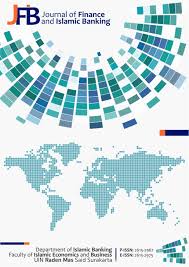Journal of Finance and Islamic Banking
Full Lenght Article
Determinants of Consumption Value on Intention to Use Shariah Mobile Banking: Exploring the Role of Consumer Preference
Abstract
This study analyzes the use of mobile banking by both Islamic and conventional bank customers using the theory of consumption value. The aim of this research is to evaluate the factors influencing customers' decisions to use dual mobile banking services. The proposed hypothesis is that the intention to use Islamic mobile banking services is influenced by functional, conditional, social, emotional, and epistemic values mediated by consumer preferences. The method used is structural equation modeling with partial least squares (SEM-PLS) with a sample of 191 people, all of whom use both conventional and Islamic mobile banking. The results show that the theory of consumption value does not directly affect the interest in using mobile banking, either conventional or Islamic, except for the emotional value variable. Consumer preferences mediate the effect of functional, conditional, emotional, and epistemic values on the intention to use conventional mobile banking. Meanwhile, conditional, emotional, and epistemic values influence the interest in using Islamic mobile banking, which is mediated by consumer preferences. These findings indicate that the consumer's intention to use mobile banking is influenced by the theory of consumption value regardless of whether the service is Islamic or not. The implication of this research is that Islamic mobile banking services need to improve their service quality by considering consumer preferences and the theory of consumption value, thereby enhancing the usage of services by both conventional and Islamic bank customers.
Keywords
Declarations
Publisher's Note
Universitas Islam Negeri Raden Mas Said Surakarta remains neutral with regard to jurisdictional claims in published maps and institutional affiliations.
References
Amin, S., & Tarun, M. T. (2021). Effect of consumption values on customers’ green purchase intention: a mediating role of green trust. Social Responsibility Journal, 17(8), 1320–1336. https://doi.org/10.1108/SRJ-05-2020-0191
Goh, T. T., Suki, N. M., & Fam, K. (2014). Exploring a consumption value model for Islamic mobile banking adoption. Journal of Islamic Marketing, 5(3), 344–365. https://doi.org/10.1108/JIMA-08-2013-0056
Hair, J. F., Hult, G. T. M., Ringle, C. M., Sarstedt, M., Danks, N. P., & Ray, S. (2021). An Introduction to Structural Equation Modeling BT - Partial Least Squares Structural Equation Modeling (PLS-SEM) Using R: A Workbook (J. F. Hair Jr., G. T. M. Hult, C. M. Ringle, M. Sarstedt, N. P. Danks, & S. Ray (Eds.); pp. 1–29). Springer International Publishing. https://doi.org/10.1007/978-3-030-80519-7_1
Hair Jr, J. F., Matthews, L. M., Matthews, R. L., & Sarstedt, M. (2017). PLS-SEM or CB-SEM: updated guidelines on which method to use. International Journal of Multivariate Data Analysis, 1(2), 107–123.
Junaidi, J. (2022). Religiosity versus profit-loss sharing: how Islamic banks brand fidelity influence the Muslim consumers’ commitment. Journal of Islamic Accounting and Business Research, 13(6), 960–976. https://doi.org/10.1108/JIABR-07-2021-0188
Junaidi, J., Anwar, S. M., Alam, R., Lantara, N. F., & Wicaksono, R. (2023). Determinants to adopt conventional and Islamic banking: evidence from Indonesia. Journal of Islamic Marketing, 14(3), 892–909. https://doi.org/10.1108/JIMA-03-2021-0067
Junaidi, J., Wicaksono, R., & Hamka, H. (2022). The consumers’ commitment and materialism on Islamic banking: the role of religiosity. Journal of Islamic Marketing, 13(8), 1786–1806. https://doi.org/10.1108/JIMA-12-2020-0378
Latif, M., Yahya, M. H., & Junaina, M. (2017). Factors Influencing Customer’s Acceptance of Islamic Banking Products and Services. Ikonomika, 2(1), 1–18. https://doi.org/10.24042/febi.v2i1.943
Mohd Suki, N. (2016). Consumer environmental concern and green product purchase in Malaysia: structural effects of consumption values. Journal of Cleaner Production, 132, 204–214. https://doi.org/10.1016/j.jclepro.2015.09.087
Refinitiv. (2022). Islamic Finance Development Indicator Report. http://bit.ly/IFDI2022.
Sanchez, G. (2013). PLS path modeling with R. Berkeley: Trowchez Editions, 383(2013), 551.
Sheth, J. N., Newman, B. I., & Gross, B. L. (1991). Why we buy what we buy: A theory of consumption values: Discovery service for air force Institute of Technology. Journal of Business Research, 22(2), 159–170. https://doi.org/10.1016/0148-2963(91)90050-8
Statistik Perbankan Syariah. (2022). https://ojk.go.id/id/kanal/syariah/data-dan-statistik/statistik-perbankan-syariah/Pages/Statistik-Perbankan-Syariah---Desember-2022.aspx
Sweeney, J. C., & Soutar, G. N. (2021). Consumer perceived value: The development of a multiple item scale. Journal of Retailing, 13(3), 229–243. https://doi.org/10.1108/ITSE-06-2016-0017
Tang, Y., & Forster, P. (2007). Exploring the value structure behind mobile auction adoption intention. AMCIS 2007 Proceedings, 499.
Copyright and permissions
This work is licensed under a Creative Commons Attribution-NonCommercial-ShareAlike 4.0 International License.



